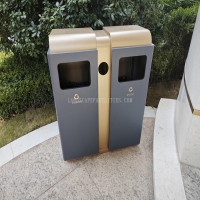Welcome to the website for landscape facilities products and knowledge.
How do landscape tables in arid climates differ in design from those in humid or rainy regions?
Landscape tables in arid climates prioritize durability against extreme heat, UV exposure, and sand erosion. Designers typically use materials like powder-coated metals, UV-stabilized plastics, or dense stone that won't crack in dry conditions. These tables often feature minimal joints to prevent sand accumulation and may incorporate weighted bases for wind resistance.
In contrast, humid or rainy region designs focus on water management. Tables frequently use naturally rot-resistant woods (teak, cedar) or marine-grade polymers with slatted surfaces for quick drainage. Many incorporate elevated designs with airflow gaps to prevent mold, while rust-proof hardware becomes essential.
Arid climate tables often have lighter colors to reflect heat, while humid region designs may embrace darker tones that hide moisture spots. The structural approach differs too - desert tables might anchor directly to hardscape, whereas rainy-area designs often require adjustable feet to compensate for soft, shifting ground.
Modern hybrid designs are emerging, using materials like recycled composite lumber that performs well in both environments, though specialized solutions still dominate extreme climates. The most successful designs always consider not just weather resistance, but also how microclimates (like poolside humidity in deserts) affect material choices.
Related search:

Recommendation
Double-bucket garbage bin, outdoor, metal, multi-color, powder-coated, double-bucket trash can